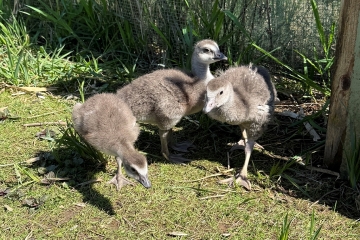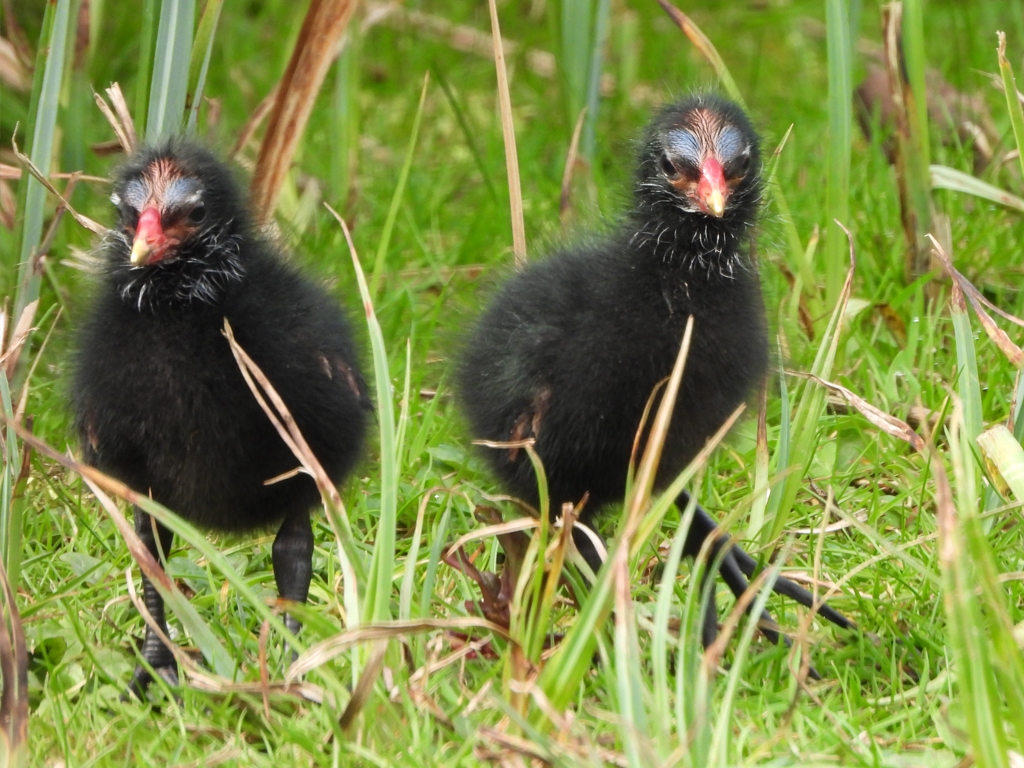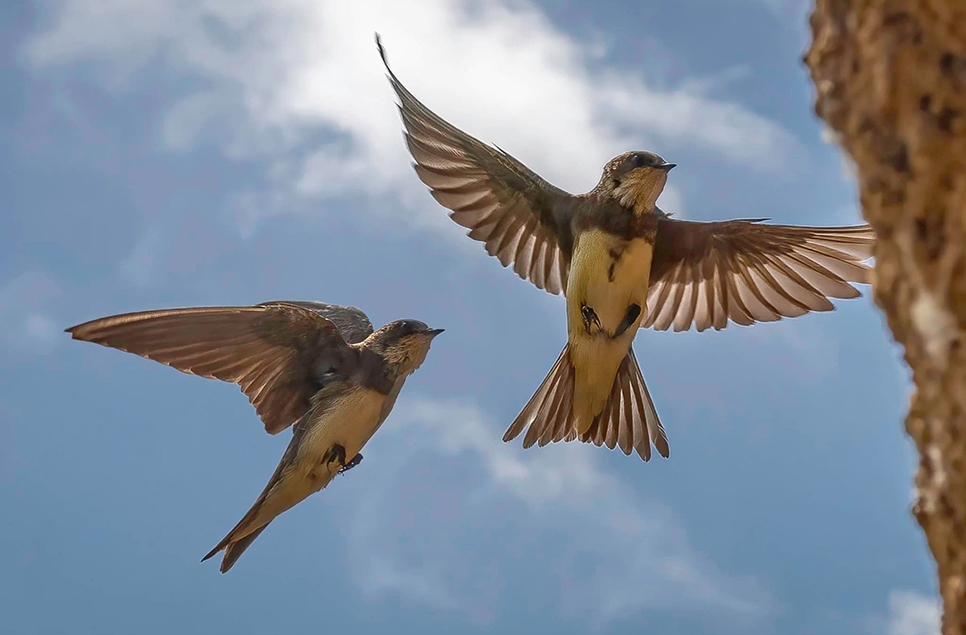Wardens wild walks
As summer begins breeding season is still underway for many wild birds, but finishing for others. Here is a look at what our wardens are seeing on their walk arounds each day.
Fledging Sand Martins
The sand martins began returning in early April and are nesting in good numbers! Last week we started seeing fledglings poking they're heads out of the nest bank holes in groups of three and four. Now some youngsters are taking first flights.
Sand martins will raise more than one brood in a breeding season so even after these youngsters fledge the hide windows will remain closed. We will reopen the windows once the sand martins start migrating south around the end of August. The martins swooping around the nesting holes and over the large lagoon are hypnotizing to watch and can be seen very well through the glass hide windows..
Camera lenses or arms protruding from the windows will put the birds off, especially as the 'arms' of the nesting banks are slanted towards the hide's viewing windows. To avoid disturbing the birds we cannot clean the windows daily, however, they are cleaned weekly. Thanks for understanding.
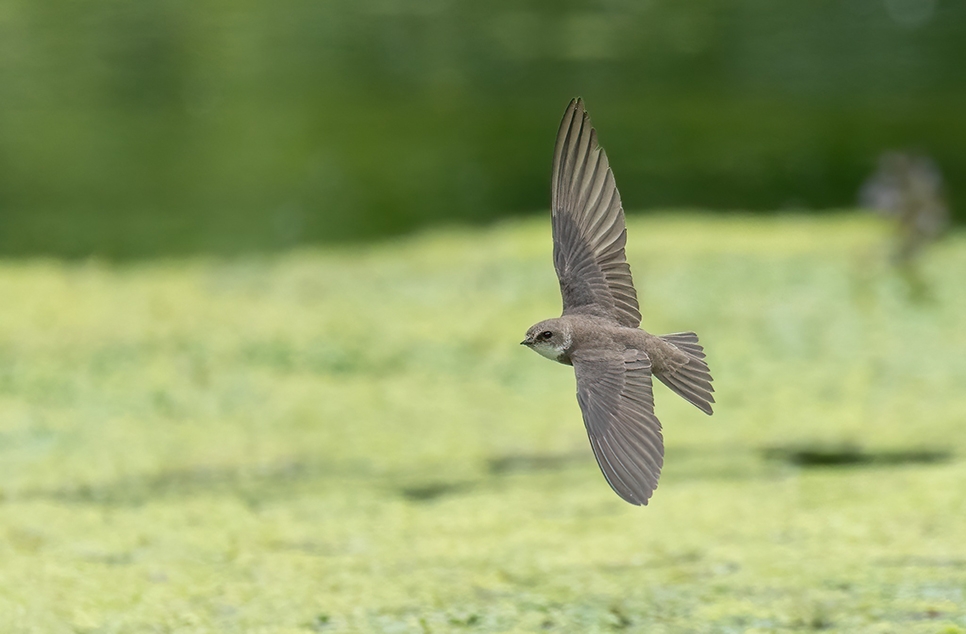
A sand martin swooping over pond algae. Photo: Alec Pelling 2024
Kingfisher fledges, now round 2
The first kingfisher brood has fledged. On 1st June Reserve Manager Suzi Lanaway saw one youngster with the tell-tale white tip on its bill out of the nest, sitting on Perch #3 calling for food from its parents. Since then the male has been seen clearing nest hole 5 again, likely getting ready for a second brood.
The kingfishers went very quiet in May, but they always do when they are incubating eggs. For most of the month we watched the male kingfisher taking fish into nest hole 5. Male kingfishers beaks are totally black. Female kingfishers have orange on their bottom bill. Juvenile kingfishers are have duller feathers and greyish legs with a whitish tip on their beak.
Kingfishers are site loyal and a pair have been nesting in Arun Riverlife nesting bank since 2020 - about seven years after it was built. Our nesting bank copies the steep-sided riverbanks where kingfishers nest, a habitat that is disappearing in the wild. Kingfishers dig a long nest tunnel in a bank near water to lay their eggs and raise chicks. The water nearby must not dry out in hot weather and must be unpolluted - conditions that are perfect at the wetland reserve.
Arundel Wetland Centre has always had kingfishers onsite with sightings peaking in the autumn and winter, when fallen leaves make it easier to spot perching birds. Now sightings in spring and summer are higher because of the pair nesting in the banks so close to the Discovery hide and café windows.
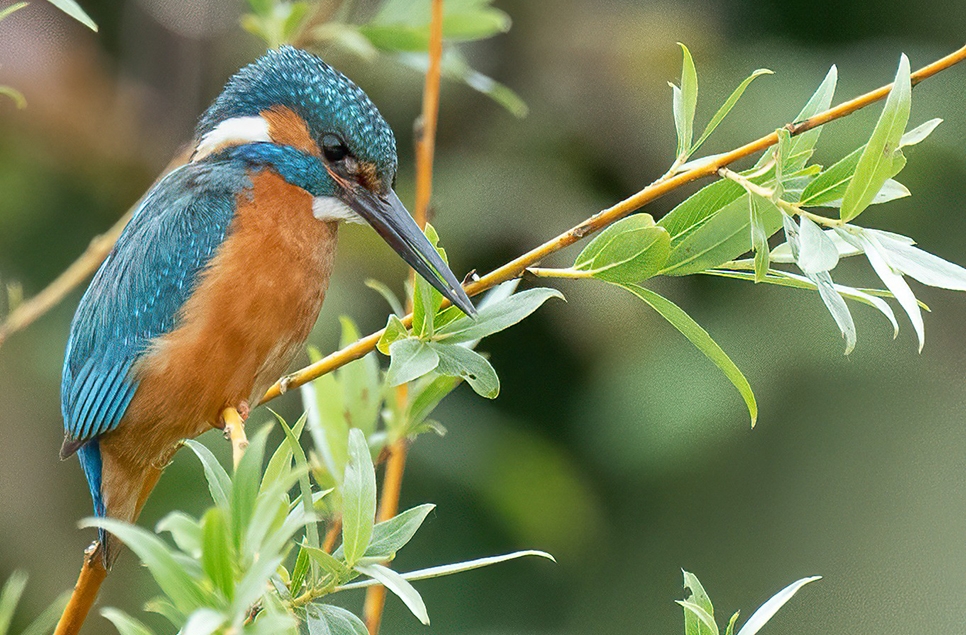
Male kingfisher on perch June 4 2024 Photo by Alec Pelling
Oystercatcher chick trio
A pair of oystercatchers was spotted with three chicks opposite the Ramsar hide on June 3rd! This pair nested on the Wet Grassland this year, instead of their usual spot on top of the Sand Martin Hide roof. A second pair doesn't seem to have settled into a nesting spot as they flitted between Pelican Cove, our Reedswamp exhibit and the island on Arun Riverlife Lagoon.
Oystercatchers make a scrape nest in rocky, flat ground where they can see in all directions. The oystercatchers sometimes picked such an ‘active’ spaces as a strategy to keep predators away. In previous years the oystercatchers sometime nest among the noisy black-headed gulls who act as an alarm protecting their own nests when predators are near. However this year the black-headed gull group nesting on the Arun Riverlife island are constantly chasing off the oystercatchers this year.
Lapwings loss
Lapwings paired up and were nesting on the wet grassland in late April. The wetland vegetation grows quickly in spring and monitoring these nests on our wildlife surveys becomes a challenge. With spring so damp and wet it appears the lapwing have not done very well this year. Sadly there is no evidence of any eggs hatching this year and pairs have left the site rather than try again.
Black-headed gulls
Black-headed gull nests are in abundance this year. The newest spot was atop a clump of reed directly in front of the Ramsar hide.
Black-headed gulls breed in colonies on freshwater lake islands, like those our Arun Riverlife lagoon between the Ramsar and Sand martin hide. This year you will see nest directly in front if the Ramsar hide in the reeds as well. The sit on eggs in May and the chicks began appearing at the end of May. They can be seen easily from the windows in the cafe seating area in the visitor centre on the island. Also look for them on the islands across from the Sand Martin hides.
Larger herring gulls will prey on the gull chicks while they are small, sending the adult black-headed gulls up in the air to give chase.
Prolific Pochards
A pochard pair has once again raised two ducklings at Pelican Cove. We have watched the youngster grow up on the water and thrive. This is the third year a pair have raised young in the dalmatian pelican exhibit. A clutch of six pochard ducklings also appeared on the long path with their female parent making appearances from time to time. Adult pochards have been peppered around the site this season.
Mute swans
A pair of mute swans on the Waterside Walk area had two cygnets in early May but they disappeared within a week. A second pair of swans has been seen on site near Ramsar hide with six cygnets on the water.
Keep watching wetland wildlife this June. Although some ducks maybe going into moult soon and most will look brownish, the wildflowers keep the site packed with vibrant colours attract an amazing range of butterflies, dragonflies, bees and hoverflies.
Ready to visit?
If you've been inspired to explore Arundel Wetland Centre, find out more and plan your visit online.
Plan your visit
Ready to visit?
If you've been inspired to explore Arundel Wetland Centre, find out more and plan your visit online.
Plan your visit